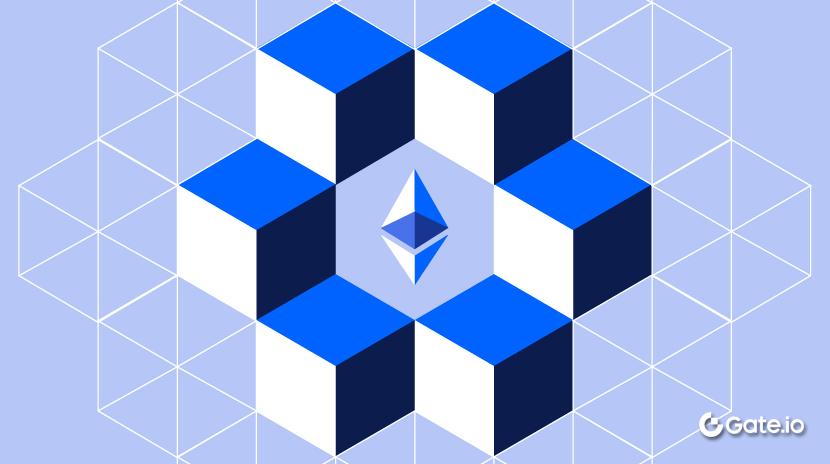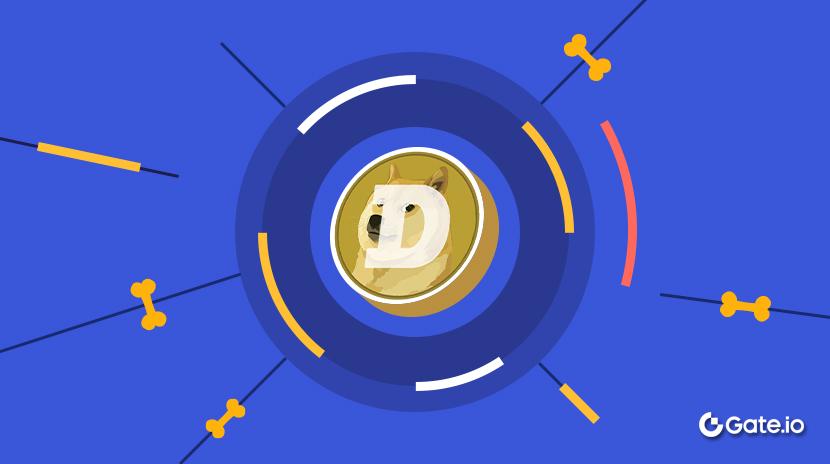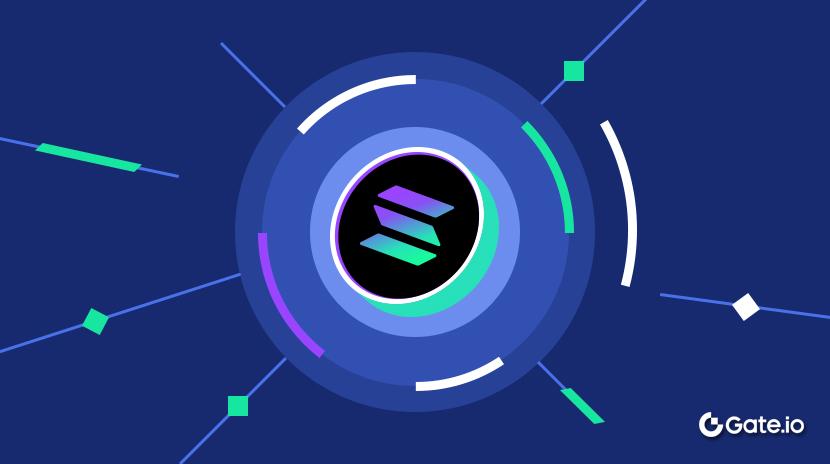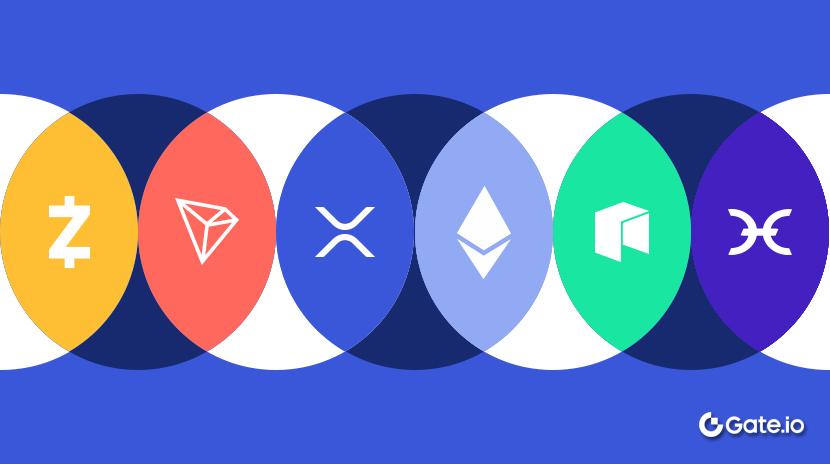Nhật ký công cộng chủ yếu trên chuỗi: Phân tích chiến lược dẫn đến cuộc đối đầu cuối cùng trên TRUMP
2023
5.3
Đừng nhắm vào đáy tuyệt đối, và đừng lo lắng về việc bán quá sớm. Bản chất của việc “bán quá sớm” là sợ lỡ cơ hội với những cơ hội có nhiều lần nhân, nhưng điều mà thị trường chính không sợ nhất là những cơ hội có nhiều lần nhân. Nỗi sợ bán quá sớm thường thấy ở những người chậm chạp can thiệp hoặc có thông tin trễ vì lựa chọn của họ bị hạn chế. Tuy nhiên, trong thị trường chính, lo lắng này không nên tồn tại. Dễ dàng hơn nắm bắt được mười cơ hội 10 lần nhân hơn là một cơ hội 100 lần nhân, và bạn có thể kết thúc việc mất vốn trong quá trình đuổi theo cái sau.
7.24
Vấn đề này đã xảy ra nhiều lần: khi không quen với một lĩnh vực như giao dịch spot, đầu tư hàng chục nghìn đô la Mỹ và thấy lời 10-30% nhưng do dự không rút lời. Trong những chuỗi quen thuộc trên thị trường chính, người ta cảm thấy việc nắm giữ 5-10 ETH đã là một vị thế nặng, nhưng vẫn gặp khó khăn trong việc giữ và sợ mất mát.
8.31
- Airdrop Sei và Friend Tech: Việc tạo kịch bản kỹ thuật có thể sử dụng ngay càng nhanh chóng là rất quan trọng. Tốc độ rất quan trọng - trì hoãn chỉ một ngày có thể đồng nghĩa với việc mất đi 10 lần lợi nhuận.
- Shia: Khi đánh giá xem một “shitcoin” có phải là một cơ hội mua phù hợp, thì nên xem xét lợi ích dự kiến thay vì chỉ dựa vào việc đánh giá dựa trên bội số của vị trí dưới cùng. Hầu hết shitcoins sẽ có vị trí nhập cửa thấp hơn so với cái bạn mua, và một lý do khác nữa là khi mà nhiều nhóm bắt đầu thảo luận về nó, bạn có thể cảm thấy rằng cơ hội sớm đã bị bỏ lỡ. Tuy nhiên, nếu người sáng lập G2 cá nhân phát hành đồng tiền, thì đó tương tự như một tin tức tích cực ở cấp độ FUMO, và ít nhất có thể lên men trong vài ngày. Nếu bạn đưa ra quyết định của mình dựa trên sự đánh giá hợp lý thay vì những yếu tố tâm lý này, bạn nên có thể đạt được lợi nhuận lên đến 100 lần, bởi việc trốn thoát khỏi đỉnh là điều mà tôi đặc biệt giỏi.
9.3
Không bao giờ triển khai hàu hết với số vốn rất lớn trong một thời gian rất ngắn. Việc có lớn nhệ nhơ hơn là chấp nhận một lợi nho nhỏ hơn, nhưng rội ro mất mát động nghĩa với việc bị phá sản là không chỉnh thủc. Ngoài ra, khi giao dịch trong những lĩnh vực xa lạ, đợi khi không nên hoạt động dựa trên logic quá đơn giản.
9.4
Học cách cắt lỗ nhanh chóng và sạch sẽ. Đừng mong mình luôn đúng mọi lúc. Nếu bạn mắc sai lầm, thì càng nhanh càng cắt lỗ, thì càng tốt.
10.12
Hôm nay, khi chơi bài, tôi nhận ra rằng tôi thường đặt cược dựa trên số chip của mình thay vì tình hình trên bàn. Vấn đề ở đây là sự dung tục của tôi không tăng lên cùng với việc tăng số chip của mình. Thực tế, nó đã trở nên mong manh hơn.
10.24
- Cơ hội nhỏ: Những cơ hội này có thể miễn phí hoặc chỉ đòi hỏi thời gian để kiếm được lợi nhuận dự kiến từ 5.000-30.000 USD. Có rất nhiều cơ hội như vậy, và khả năng thị trường có hạn với rủi ro thấp.
- Cơ hội vừa: Có thể cần thời gian và nghiên cứu để kiếm được lợi nhuận dự kiến từ 50.000 đến 300.000 USD. Đây không phải là khoản đầu tư thấp, và những cơ hội như vậy không thường xuyên xảy ra mỗi tháng. Khả năng của thị trường lớn, với rủi ro và phần thưởng.
- Cơ hội lớn: Đây thường là những cơ hội khó bắt gặp ngay cả khi chúng đang trực tiếp trước mắt mọi người. Thông thường, chúng đòi hỏi một cách tiếp cận thiểu số. Một loại là đầu tư vừa phải với cơ hội phi thường, và loại còn lại là đầu tư cao hơn với cơ hội hợp lý nhưng xác suất thành công cao hơn.
2024
1.21
Đánh giá hai cơ hội cấp cấp năm: Node Monkey và SatoshiVM. Các dự án có khả năng đạt lợi nhuận hàng chục triệu đô la là những dự án cấp năm, và đã có hai cơ hội như vậy chỉ trong một tháng.
- Vấn đề với Node Monkey là tôi không nghiên cứu kỹ trước. Chỉ sau đó tôi mới nhận ra rằng đó là bức tranh đầu tiên gốc 10k trên Bitcoin. Mà không biết thông tin này, tôi vẫn đánh giá rằng 0.03 BTC đáng để tham gia, nhưng tôi không dám mạo hiểm với vị thế lớn. Cuối cùng, tôi đầu tư 0.6 BTC và kiếm được khoảng 3 BTC lời. Đây là cơ hội 10 lần mà có thể chứa đựng hàng trăm triệu đồng.
- SAVM còn kinh khủng hơn. Tôi đã theo dõi nó trong một tuần, thảo luận với ba người bạn mỗi ngày hoặc hai ngày trước khi ra mắt, nhưng đã bỏ lỡ cơ hội làm hàng chục triệu lợi nhuận trong một ngày.
Các sai lầm trong cả hai dự án thực sự tương tự: do nhiều lý do, tôi đã lười biếng trong việc phân tích và tập trung vào các dự án. Mặc dù đó chỉ là một trường hợp kiếm ít hơn, chi phí cơ hội vẫn là một loại chi phí. Những tình huống như vậy nên được tránh. Đối với những dự án đáng để tập trung hoặc những dự án mà tôi tin tưởng, tôi phải đảm bảo nghiên cứu kỹ lưỡng. Tôi tin rằng cơ hội như vậy sẽ tiếp tục xuất hiện suốt năm. Trung bình, có thể có một cơ hội 10 lần mỗi 1-2 tháng. Lần tới, tôi phải nắm bắt cơ hội.
3.28
Vấn đề chính trong tháng này không phải là không lấy lợi nhuận đúng cách. Luôn có các dự án mới trên blockchain, vì vậy việc lấy lợi nhuận dần dần luôn là phương pháp tốt nhất. Tôi đã làm tốt điều này trong quá khứ, nhưng tháng này tôi thất bại vì hai lý do:
Một, lợi nhuận của mọi người với Bome quá điên rồ đến nỗi, so với đó, tiền bạc chỉ dường như là những con số. Tôi có lợi nhuận lên đến vài trăm nghìn USD nhưng không rút lợi nhuận, điều đó chắc chắn là một sai lầm do lý do cảm xúc.
Đối với hai dự án khác, họ đã đạt được mức giá tôi nên bán, nhưng sau khi thấy giá tăng mạnh ngay sau những bài đăng của tôi, tôi do dự và cảm thấy ngượng ngùng khi bán. Tuy nhiên, không cần phải có tâm lý này. Khi đến lúc bán, tôi chỉ cần bán thôi.
4.5
Việc quá cẩn trọng cũng là một hình thức của rủi ro.
4.14
Học GCR.
Trong các chu kỳ alt, bạn nên tăng cường rủi ro khi xu hướng đầu tiên đảo ngược và dần dần bảo vệ vốn khi thời gian trôi qua.
Mọi người thua vì họ làm ngược lại: chậm chạp ở đầu và ngày càng tham lam theo thời gian.
Đây là một phần quan trọng của lời khuyên cho cả những yếu tố cơ bản lớn và nhỏ: bạn nên tăng mức rủi ro khi giá bắt đầu tăng và dần giảm sau đó, thay vì ngược lại. Tương tự, đối với những đồng tiền rác mà bạn tin tưởng, hãy xây dựng một vị thế lớn ở đầu và điều chỉnh sau này. Tôi thường mua quá ít ở đáy và sau đó tăng vị thế sau khi giá tăng, điều này dẫn đến lỗ.
6.10
Tóm lại những vấn đề lớn nhất trong các hoạt động blockchain gần đây của tôi:
Một, tôi không mở vị thế đủ lớn và sợ mất tiền.
Tôi đã do dự ở đầu và sau đó mới thêm vào vị thế của mình, điều đó khiến tôi trở nên passsive. Tôi có một số cơ hội đầu tư vào một đồng coin có thể kiếm được hơn 100,000 USD, nhưng tổng lợi nhuận cuối cùng chỉ là 70-80,000 USD.
6.18
Tôi đã ở trong không gian tiền điện tử gần ba năm và gần đây, tôi đã suy nghĩ lại về những sai lầm mà tôi thường mắc phải trong giao dịch của mình. Tôi phải thừa nhận rằng mọi người rất dễ bị ảnh hưởng bởi cách suy nghĩ theo thói quen.
Tôi coi mình may mắn vì đã tham gia giao dịch trên chuỗi ngay sau khi tham gia không gian này. Ban đầu, tôi chơi với các đồng tiền meme nhỏ trên BSC, rồi chuyển sang NFT. Đặc điểm chung của cả hai là hầu hết các dự án có quy mô vốn nhỏ, nhưng có rất nhiều dự án, vì vậy đó là trường hợp đặt cược nhỏ để có lợi nhuận lớn hơn, tích lũy theo thời gian.
Tuy nhiên, mọi thứ đã thay đổi. Bây giờ thường có các pool triệu đô la trên chuỗi và nhờ cơ chế AMM, thanh khoản rất tốt. Trong khi đó, CEX, ngoài các sàn giao dịch hàng đầu với các altcoin phổ biến nhất, có tính thanh khoản kém. Nhưng tư duy tôi hình thành từ sớm vẫn khiến tôi nghĩ rằng các dự án on-chain không phù hợp với các khoản đầu tư lớn; các quỹ lớn vẫn nên được giao dịch trên CEX. Điều này đã gây ra sự chia rẽ trong cách tiếp cận của tôi. Mặc dù chuyên môn của tôi và các xu hướng nóng hiện tại là trên chuỗi, tôi có xu hướng thận trọng quá mức và cuối cùng đặt cược nặng hơn vào các sàn giao dịch.
Một cách khách quan, với khả năng tiếp nhận một phần mười của rủi ro và sử dụng một phần mười vốn, tôi có thể đạt được cùng một mức lợi nhuận trên chuỗi như tôi đã làm với giao dịch altcoin CEX. Tỷ lệ cược của tôi giữa hai cái đó rõ ràng bị đảo lộn. Điều này là một sai lầm do quán tính của suy nghĩ của tôi gây ra. Tuy nhiên, tôi rất vui vì cuối cùng tôi đã nhận ra vấn đề này và hy vọng sẽ cải thiện sớm.
7.28
Neiro đã mắc một số sai lầm kinh điển. Sai lầm đầu tiên là cách kể chuyện của cấp độ này. Bản năng đầu tiên của tôi cũng là có một cơ hội tuyệt vời, nhưng tôi không dám đầu tư 600k. Tôi luôn nghĩ quá nhiều mà không có lý do, có thể vì tôi phải quản lý cộng đồng. Tôi có khuynh hướng do dự và nghi ngờ lại lần nữa. Ngoài ra, tôi bị ảnh hưởng bởi sự kiện Trump với một loạt dự án thất bại, nghĩ rằng đó là tin tức lỗi thời từ 20 phút trước. Nhưng thực ra, không cần phải quá thận trọng. Áp lực lớn phần nào là tự gây ra. Không cần phải mang gánh nặng nặng nề như vậy. Ở cấp độ này, khi cơ hội được phát hiện sớm, tôi nên mạo hiểm. Ngoài ra, cần phải duy trì sự nhạy bén—vì tin tức cũ 20 phút rồi, tại sao tôi không nghĩ đến việc tìm kiếm PumpFun sớm hơn? Đây đều là các hoạt động mà nên thực hiện theo tiềm thức.
11.3
Thị trường trên chuỗi đã đạt đỉnh mới trong tháng 10. Kết quả tổng thể là tốt, với lợi nhuận khoảng từ 500k đến 700k U, nhưng vẫn có nhiều hoạt động không diễn ra suôn sẻ. Tôi đã tham gia vào những việc không nên, bán những thứ không nên bán, và còn nhiều điều khác nữa. Tóm lại, tôi nghĩ rằng những người lãnh đạo trong các câu chuyện mới và các hành trình mới nên có tầm nhìn tốt, như Goat, Pnut. Còn đối với các bản sao như Beta, quan trọng là phải thu lợi và bán sớm. Nếu có lợi nhuận chưa thực hiện được là 200k U trên một bản sao, tôi nên bán ngay.
11.24
Trong giao dịch này, tổn thất tối đa mà tôi sẵn lòng chấp nhận là bao nhiêu?
Nhân tố cốt lõi của giao dịch trên chuỗi là đặt cược nhỏ để có lợi nhuận lớn. Đa số thời gian, tôi có thể chấp nhận rủi ro mất toàn bộ vốn, vì tôi đang hướng đến mức lợi nhuận 5-10X hoặc thậm chí cao hơn, trừ khi tôi đang tập trung vào việc mua ở vị thế cao, điều này giống như giao dịch trên thị trường thứ cấp hơn. Nhân tố cốt lõi của giao dịch trên thị trường thứ cấp là giảm thiểu các rủi ro tiềm năng. Mức stop-loss 5-10% có nghĩa là giao dịch không hợp lệ, để đổi lại là một tiềm năng lợi nhuận 20-50%. Trước mỗi giao dịch, tôi nên cân nhắc rõ ràng xem mình sẵn lòng chịu thiệt hại bao nhiêu.
Khi tôi cảm thấy như “điều này quá dễ dàng, quá mượt mà,” tôi nên chuyển hầu hết các vị thế của mình sang stablecoins. Kinh nghiệm cho thấy rằng cảm giác này xuất hiện khi thị trường đã đạt đến giai đoạn dễ dàng nhất và có khả năng đảo chiều. Ngoài ra, sự tự tin quá mức có thể dẫn đến sai lầm.
12.1
Trong nửa sau của tháng, tôi đã đầu tư vào một số dự án, khoảng năm hoặc sáu đồng tiền Meme, mỗi đồng khoảng 100k đến 150k U. Việc tăng vị thế trên chuỗi không phải là vấn đề, nhưng thời điểm không đúng vì thị trường chuỗi đã nguội. Trong môi trường rộng lớn như vậy, tính thanh khoản và tâm lý không thể duy trì. Tốt hơn hết là đặt cược nhỏ sớm hơn là đuổi theo vị thế cao.
Tôi không nghĩ rằng có vấn đề gì với việc đánh giá của những dự án này, nhưng chi tiết về thực hiện lại kém. Ví dụ, với các dự án hồ bơi lớn, nếu tôi muốn tăng vị thế trong dài hạn mà không cảm thấy áp lực mạnh, tôi nên chú ý chốt lời hoặc cắt lỗ kịp thời, thay vì để chúng về zero.
Ngoài ra, Hyperliquid là một dự án mà tôi đã rất lạc quan trong suốt một năm qua. Nó cung cấp cơ hội để mua dưới 3 khi mở cửa, nhưng tôi đã kết thúc việc mua ở 10% cao hơn so với giá thị trường do một lệnh thị trường. Lệnh giới hạn của tôi không được thực hiện, và tôi chỉ mua được 150k U trong số 500k U mà tôi dự định đầu tư. Tôi bán quá sớm, và cuối cùng, tôi chỉ kiếm được 70k U lợi nhuận. Hoạt động của tôi cho dự án cấp độ này là tệ. Tôi nên đầu tư nhiều hơn hoặc rút lãi đúng lúc, hoặc nếu tôi mua quá ít, tôi nên giữ lâu hơn.
免责声明:
- Bài viết này được sao chép từ [ 7UpDAO], và bản quyền thuộc về tác giả gốc [@0xSunNFTNếu bạn có bất kỳ ý kiến nào về việc sao chép, vui lòng liên hệ với Gate Họcđội ngũ, sẽ xử lý nhanh chóng theo các quy trình liên quan.
- Thông báo: Các quan điểm và ý kiến được thể hiện trong bài viết này chỉ đại diện cho quan điểm cá nhân của tác giả và không cấu thành bất kỳ lời khuyên đầu tư nào.
- Các phiên bản tiếng khác của bài viết được dịch bởi nhóm Gate Learn. Bài viết dịch có thể không được sao chép, phân phối hoặc đạo văn mà không đề cập đếnGate.
Bài viết liên quan

Cách đặt cược ETH?

GateToken (GT) là gì?

Dogecoin là gì?

Solana là gì?

Coti là gì? Tất cả những gì bạn cần biết về COTI
